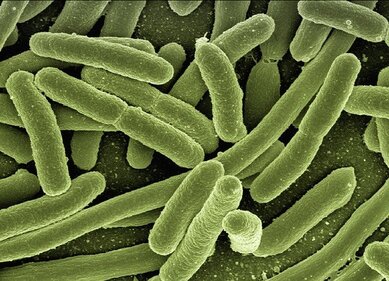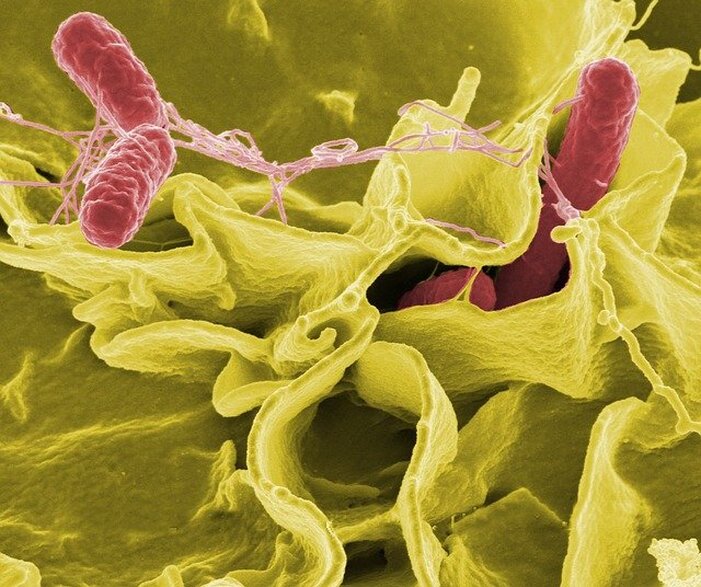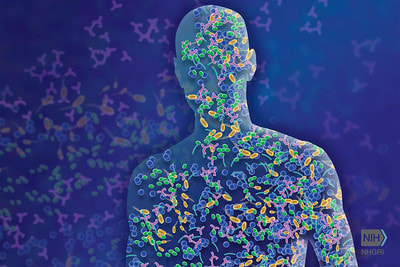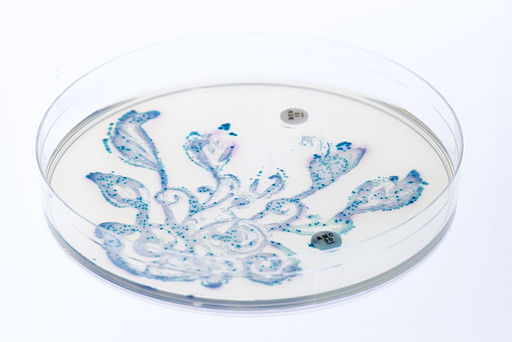The Human Microbiome and its Relationship with Autism
The microbiome is the community of microorganisms, particularly bacteria, living in areas of the human body including the gut, mouth, nasal passages, and on the skin. The composition of bacteria in the microbiome can be affected by diet, environmental factors, and genetics. The vast majority of these bacteria are not harmful, and some are even beneficial to humans. The relationship between the body and these beneficial bacteria is mutualistic, meaning both host and bacteria gain something. One example of mutualistic bacteria are those of the Bacteroides genus that help produce vitamin K, an essential blood clotting factor. The bacteria have shelter and space within the body, and in turn, humans receive essential nutrients.
When a patient takes antibiotics to treat a bacterial infection, the microbiome is affected as well. Antibiotics can wipe out some of the bacteria in the gut microbiome, although not usually drug-resistant strains. When beneficial bacteria are killed, it creates an opportunity for pathogenic bacteria, such as C. difficile, to grow. The microbiome must be restored after being altered by the antibiotic in order to physically prevent a buildup of pathogenic bacteria. This can be achieved with certain foods, like prebiotics and probiotics. Prebiotics are carbohydrates that induce the growth of certain beneficial bacteria, while probiotics are foods that contain live microorganisms. Researchers are now finding that microbiome composition can strongly influence chronic disease susceptibility. A recent study done by the University of Colorado investigated the relationship between the microbiome and the symptoms of autism spectrum disorder (ASD), a developmental condition marked by difficulty with communication and understanding social cues.
When a patient takes antibiotics to treat a bacterial infection, the microbiome is affected as well. Antibiotics can wipe out some of the bacteria in the gut microbiome, although not usually drug-resistant strains. When beneficial bacteria are killed, it creates an opportunity for pathogenic bacteria, such as C. difficile, to grow. The microbiome must be restored after being altered by the antibiotic in order to physically prevent a buildup of pathogenic bacteria. This can be achieved with certain foods, like prebiotics and probiotics. Prebiotics are carbohydrates that induce the growth of certain beneficial bacteria, while probiotics are foods that contain live microorganisms. Researchers are now finding that microbiome composition can strongly influence chronic disease susceptibility. A recent study done by the University of Colorado investigated the relationship between the microbiome and the symptoms of autism spectrum disorder (ASD), a developmental condition marked by difficulty with communication and understanding social cues.
Image Source: WikiImages
Researchers identified the composition of the gut microbiome of 103 children with ASD by isolating DNA from their fecal samples and analyzing its sequence, using genomic information to determine the bacterial species present. The study was done at two different sites, one in Arizona and one in Colorado, and also measured gastrointestinal symptoms (such as diarrhea and constipation) and behavior in the subjects. They found that the difference in the level of social withdrawal or lethargy was increased in subjects during periods where there was a large degree of change in microbiome composition. In addition, increases in inappropriate speech (measured by the children’s parents with a checklist) correlated with a decrease in gut microbiome diversity, suggesting that the gut microbiome does have an impact on ASD behavior. However, the researchers also found that the study-site location had a stronger relationship to the composition of the gut microbiome than whether the subjects had ASD or not, suggesting that there is no single microbiome composition for ASD patients. Although it is important to continue this work in uncovering the relationship between gut bacteria and disease processes, the microbiome is only one piece of the puzzle.
Featured Image Source: geralt
RELATED ARTICLES
|
Vertical Divider
|
Vertical Divider
|
Vertical Divider
|






